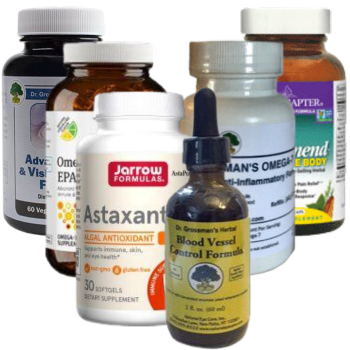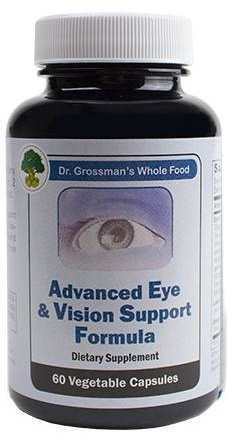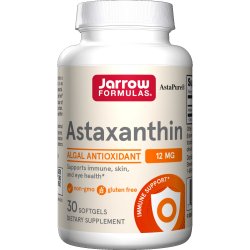Eye Pain
Detailed description Symptoms Causes
Inflammation of the iris can be uncomfortable or even painful. It includes cyclitis, inflammation of the ciliary body located behind the iris. The eye may appear red. Choroiditis, or posterior uveitis is a related condition in which the inflammation extends to the retina and choroid.
Acute, traumatic iritis occurs suddenly and is sometimes caused by trauma or injury to the eye. It can be quite painful, but it generally heals on its own within several weeks. This is the most common form of iritis.
Chronic, non-traumatic, and recurring iritis can last for months or years. It responds less readily to treatment than acute iritis and increases the risk of damage to vision. Complications of chronic iritis can include glaucoma, cataracts, cystoid macular edema, corneal calcification, posterior calcification, and possibly blindness. It can be related to a systemic disease or other ocular condition.
Vitamins
& Supplements
Not sure which to get?For help call us at 845.475.4158
Complete Product List
On a tight budget?
We recommend
Advanced Eye & Vision Support Formula (whole food) 60 vcaps
Discount Packages Anti-Inflammatory Eye and Whole Body Package 1 (1 month supply) Anti-Inflammatory Eye and Whole Body Package 1 (1 month supply)Essential antioxidants & herbs for overall eye & body health with natural anti-inflammatory properties. |
Very Important Advanced Eye & Vision Support Formula (whole food) 60 vcaps Advanced Eye & Vision Support Formula (whole food) 60 vcapsWhole food, wild crafted herbal vegetarian formula with vision antioxidants, chemical- and preservative-free. |
Very Important Astaxanthin 12 mg 30 Gels Astaxanthin 12 mg 30 GelsEye strain relief, retinal support, brain functioning and immune support. |
Very Important Zyflamend Whole Body 120 Vcaps (ZYF12) Zyflamend Whole Body 120 Vcaps (ZYF12)Excellent natural anti-inflammatory formula. |
| Important OmegaGenics™ EPA-DHA 720 Lemon 120 gels Helpful Krill Oil, 1000mg 60 softgels MSM (organic) Powder 227 gms Pleo-MUC (Mucokehl) eye drops 5X (10 Single Vials) |
Conventional Treatment
Since the cause of iritis is not known, a very careful medical history needs to be taken. Your doctor may recommend chest X-rays, blood tests, stool evaluation, skin tests or even a spinal tap.
The first line of treatment is usually steroid and non-steroidal anti-inflammatory eyedrops. If the inflammation persists or comes back, your doctor may also inject steroids around your eye or prescribe additional oral steroids, antibiotics, antifungals, or antivirals.
There are arguments for corticosteroid implants for chronic non-infectious uveitis, especially in the case of patients with recurring problems. However, these implants increase the risk of cataract development (but not progression), increased intraocular pressure and the need for IOP-lowering medication, and/or other surgical or medical interventions.1
A case of iritis usually lasts six to eight weeks. Make sure your eye doctor monitors your progress carefully. The effects of the medication can be cataracts, glaucoma, corneal changes and possibly more inflammation.
Complementary Approach
Since traumatic iritis can lead to other problems, it's always could to have any eye injury checked by your eye doctor.
We believe that eye problems such as chronic iritis reflect the health of the whole body. Where there is inflammation in one part of the body, there is often inflammation in another. Therefore diet, nutrition, and lifestyle choices can play a major role in having and maintaining good vision.
Since non-traumatic iritis is typically a symptom of underlying health conditions involving inflammation, augmenting conventional treatments with targeted antioxidants can be essential in helping preserve vision while managing the symptoms of iritis.
Uveitis, (including anterior uveitis or iritis) has been linked to oxidative stress and researchers have identified natural products as well as various medications that may be helpful.2 These include vitamins A, C, and E3 as well as aronia extract,3 curcumin,4, 5 resveratrol,6 astaxanthin,7, 8 and lutein.9
Antioxidants are available through a healthy anti-inflammatory and alkalinizing diet as well as through nutritional supplements. They help in a number of ways, including:
- Neutralizing the potentially damaging effects of free radicals that are a by-product of inflammation (particularly chronic inflammation)
- Delivering essential nutrients to all parts of the eyes, which are vital for healthy eyes
- Reducing inflammation (through specific supplements that have natural anti-inflammatory properties)
Related Conditions
Iritis may occur along with a number of other conditions:
- Rheumatoid arthritis is a chronic autoimmune problem wherein tissues surrounding the joints are swollen and inflammed.
- Uveal tract inflammations of other areas of the uvea such as cyclitis and choroiditis
- Behcet's disease - a possible autoimmune disorder in which there is blood artery and/or vein inflammation throughout the body, including the eye.
- Crohn's disease and Colitis are common types of inflammatory bowel disease.
- Graves' disease is an autoimmune condition causing hyperactivity of the thyroid.
- Lupis - another chronic autoimmune condition causing inflammation because immune system becomes over-active and attacks healthy systems.
- Chronic psoriasis - immune system abnormalities or stress-related flare-ups cause severe inflammation and scaly skin cell tissue.
- Gout - painful inflammation resulting from too much uric acid which crystallizes and gathers in joints.
- Lyme disease - a bacteria-caused infection that causes inflammation and pain in joints and can spread to the heart and nervous system.
- Tuberculosis - another bacteria-caused infection that attacks the lungs, especially impacting people with a weak immune system.
- Venereal disease, including syphilis and herpes - sexually transmitted diseases involving a variety of bacteria, viruses, and yeasts.
- Some cancers such as leukemia, lymphoma and melanoma
Footnotes
1. Reddy A, Liu SH, Brady CJ, Sieving PC, Palestine AG. (2023). Corticosteroid implants for chronic non-infectious uveitis. Cochrane Database Syst Rev.
Aug 29;8(8):CD010469.
2. Yadav UC, Kalariya NM, Ramana KV. Emerging role of antioxidants in the protection of uveitis complications. Curr Med Chem. 2011;18(6):931-42.
3. Ohgami K, Ilieva I, Shiratori K, Koyama Y, Jin XH, et al. (2005). Anti-inflammatory effects of aronia extract on rat endotoxin-induced uveitis.
Invest Ophthalmol Vis Sci. 2005;46:275–281.
4. Lal B, Kapoor AK, Asthana OP, Agrawal PK, Prasad R, et al. (1999). Efficacy of curcumin in the management of chronic anterior uveitis. Phytother Res 1999;13:318–322.
5. Liu XF, Hao JL, Xie T, Mukhtar NJ, Zhang W, et al. (2017). Curcumin, A Potential Therapeutic Candidate for Anterior Segment Eye Diseases: A Review. Front Pharmacol. Feb 14;8:66.
6. Kubota S, Kurihara T, Mochimaru H, Satofuka S, Noda K, et al. (2009). Prevention of ocular inflammation in endotoxin-induced uveitis with resveratrol by inhibiting oxidative damage and nuclear factor-kappaB activation. Invest Ophthalmol Vis Sci. 2009;50:3512–3519.
7. Galano A, Vargas R, Martínez A. (2010). Carotenoids can act as antioxidants by oxidizing the superoxide radical anion. Phys Chem Chem Phys. 2010;12:193–200.
8. Giannaccare G, Pellegrini M, Senni C, Bernabei F, Scorcia V, et al. (2020). Clinical Applications of Astaxanthin in the Treatment of Ocular Diseases: Emerging
Insights. Mar Drugs. May 1;18(5):239.
9. Jin XH, Ohgami K, Shiratori K, Suzuki Y, Hirano T, et al. (2006). Inhibitory effects of lutein on endotoxin-induced uveitis in Lewis rats. Invest Ophthalmol Vis Sci.
 info@naturaleyecare.com
info@naturaleyecare.com



 Home
Home



 Vision
Vision Vision
Vision



 Health
Health Health
Health Research/Services
Research/Services Pets
Pets About/Contact
About/Contact


